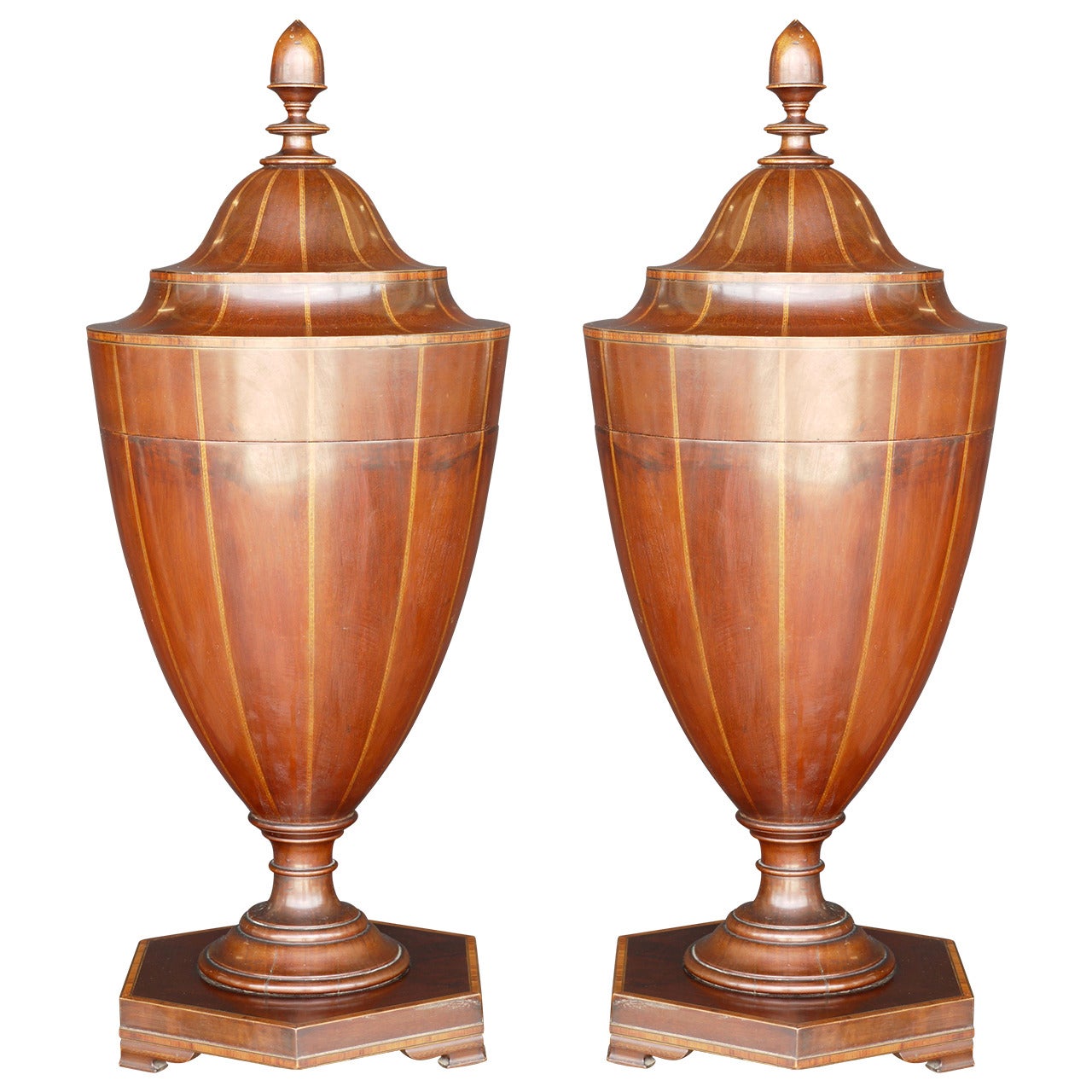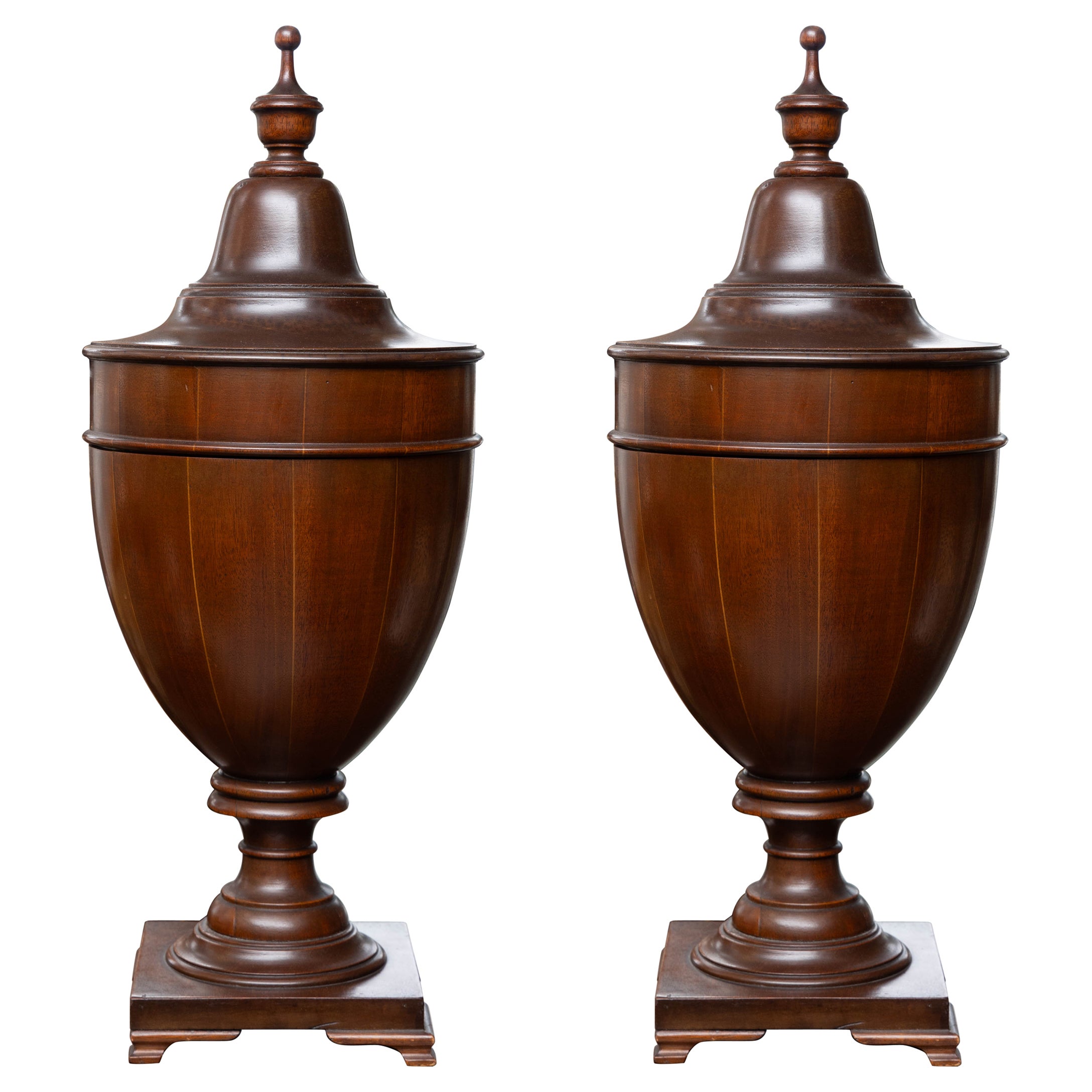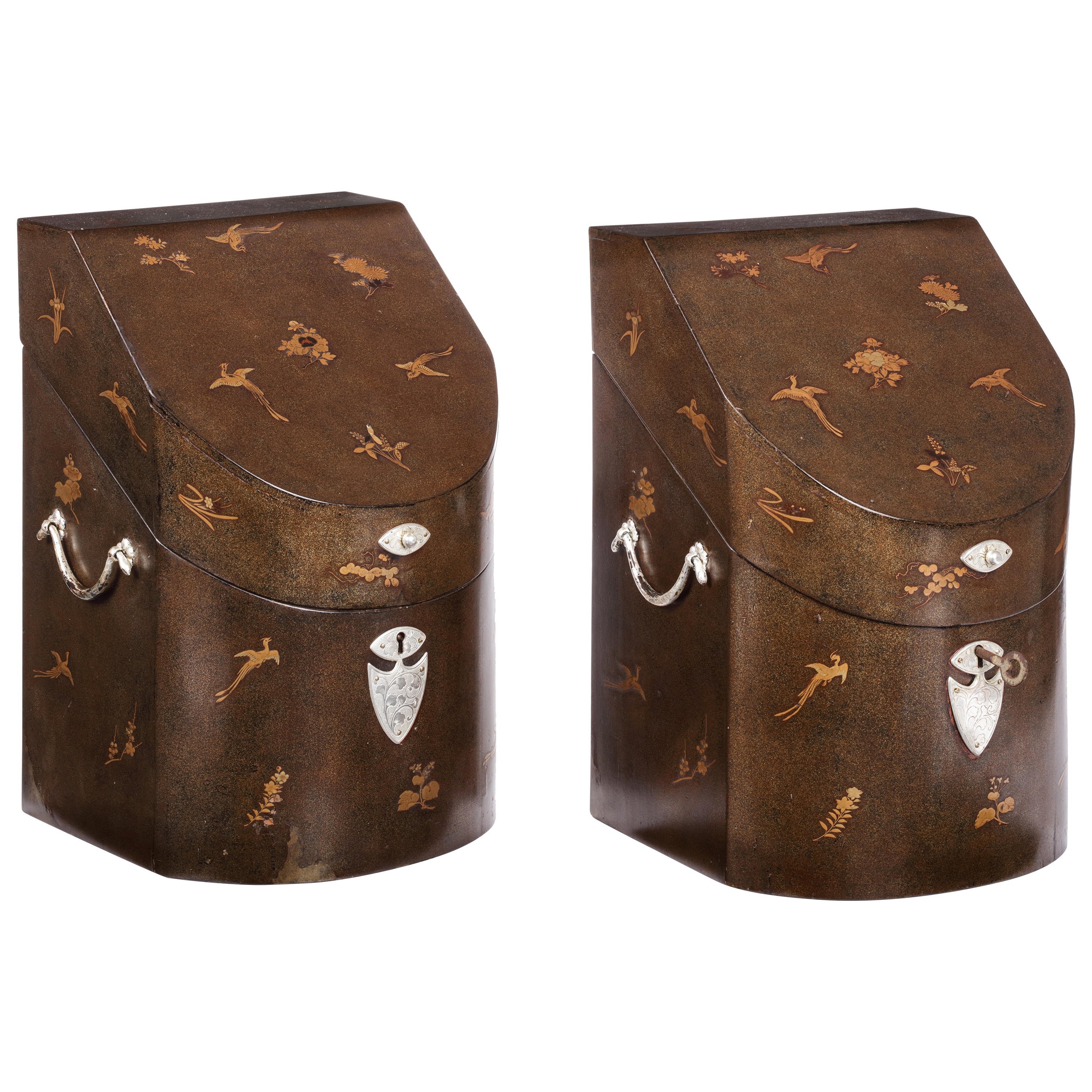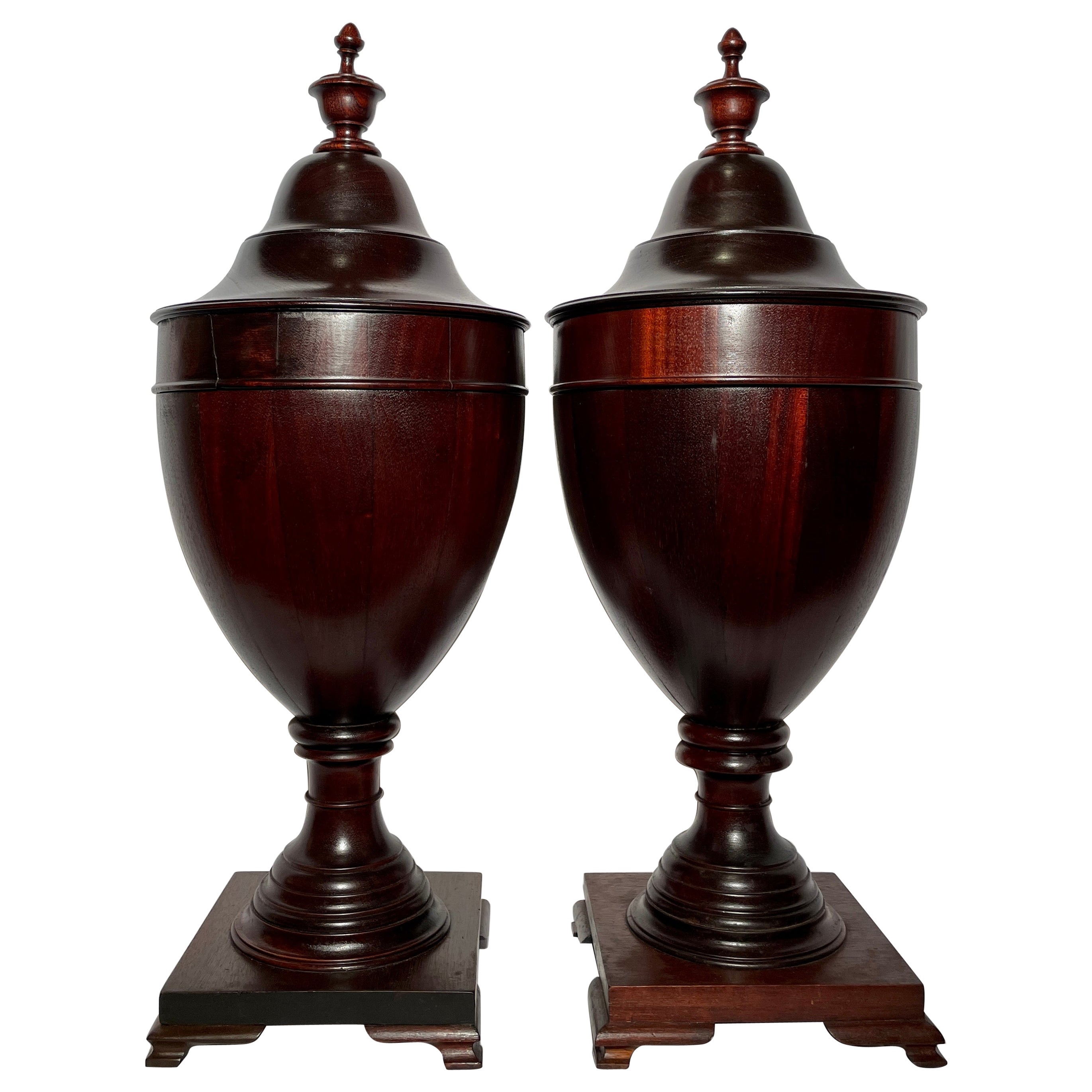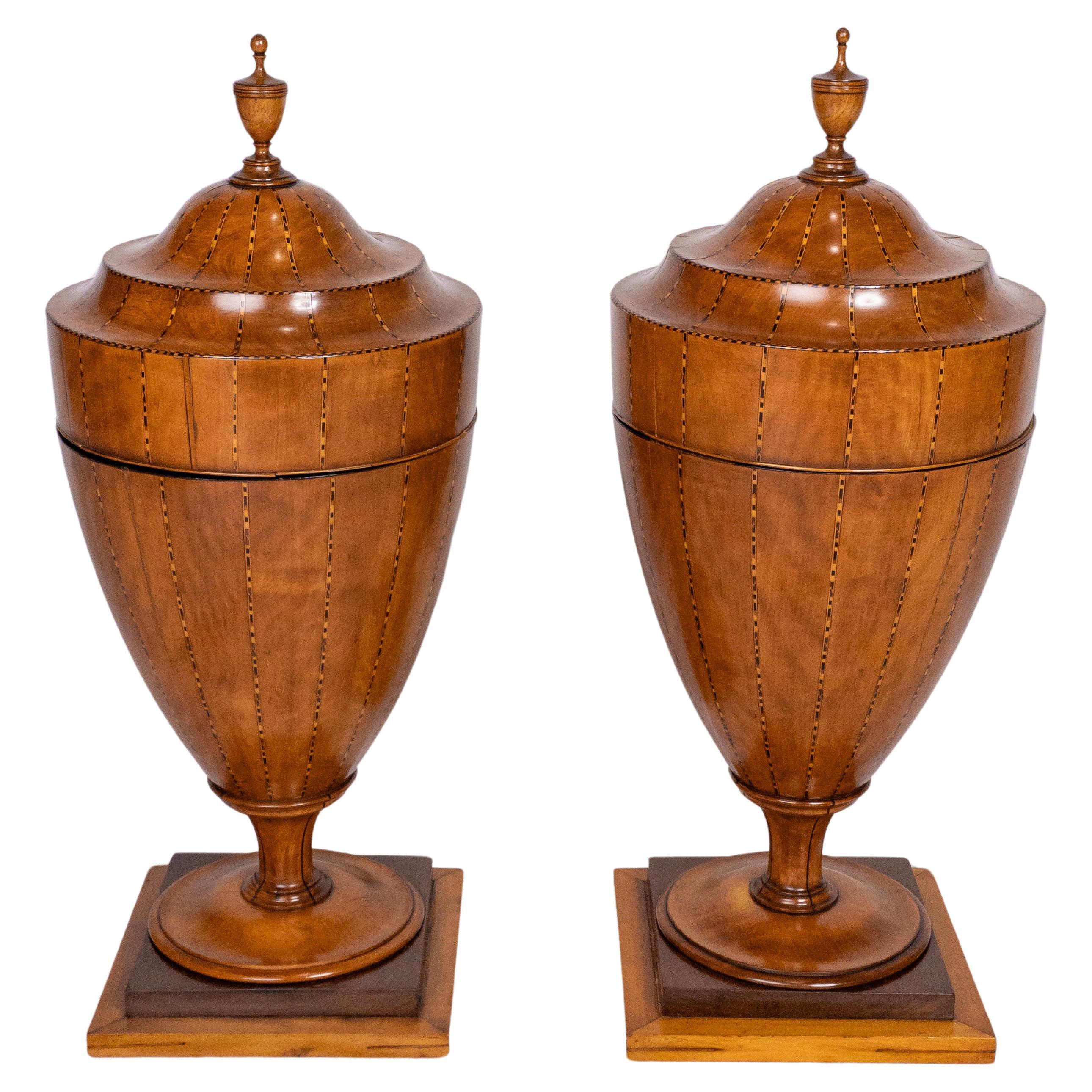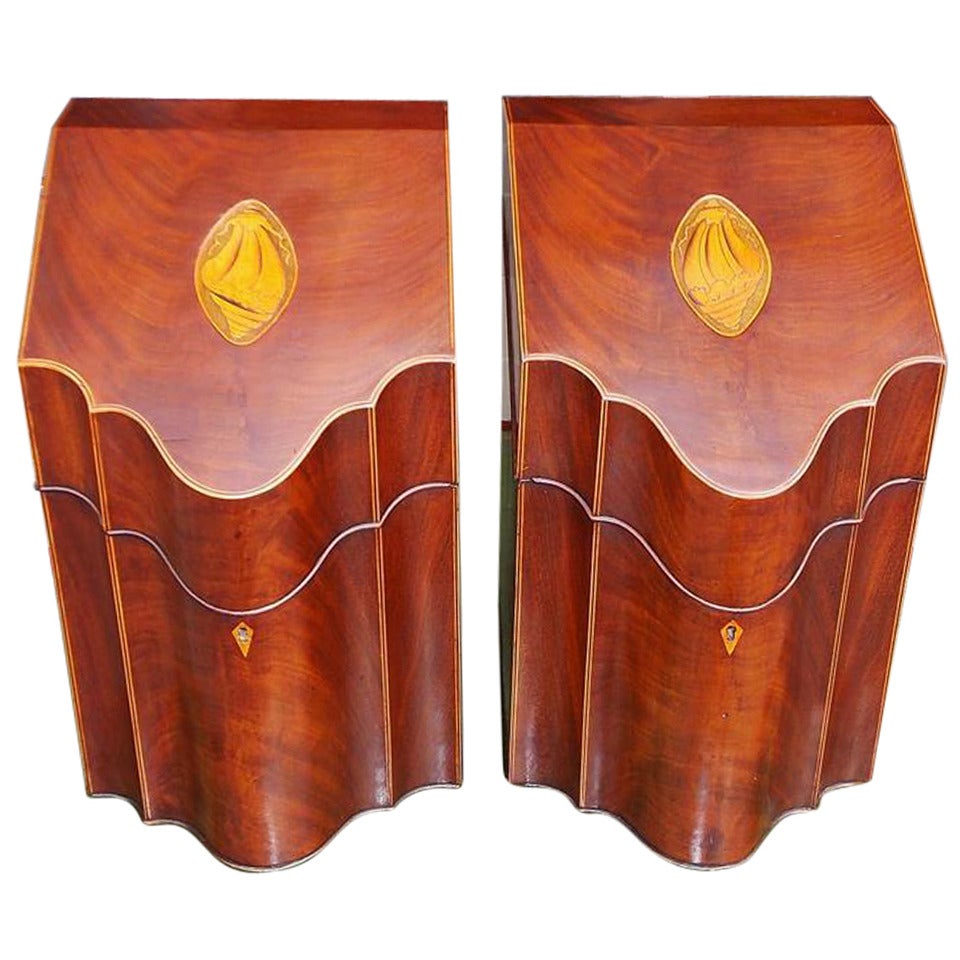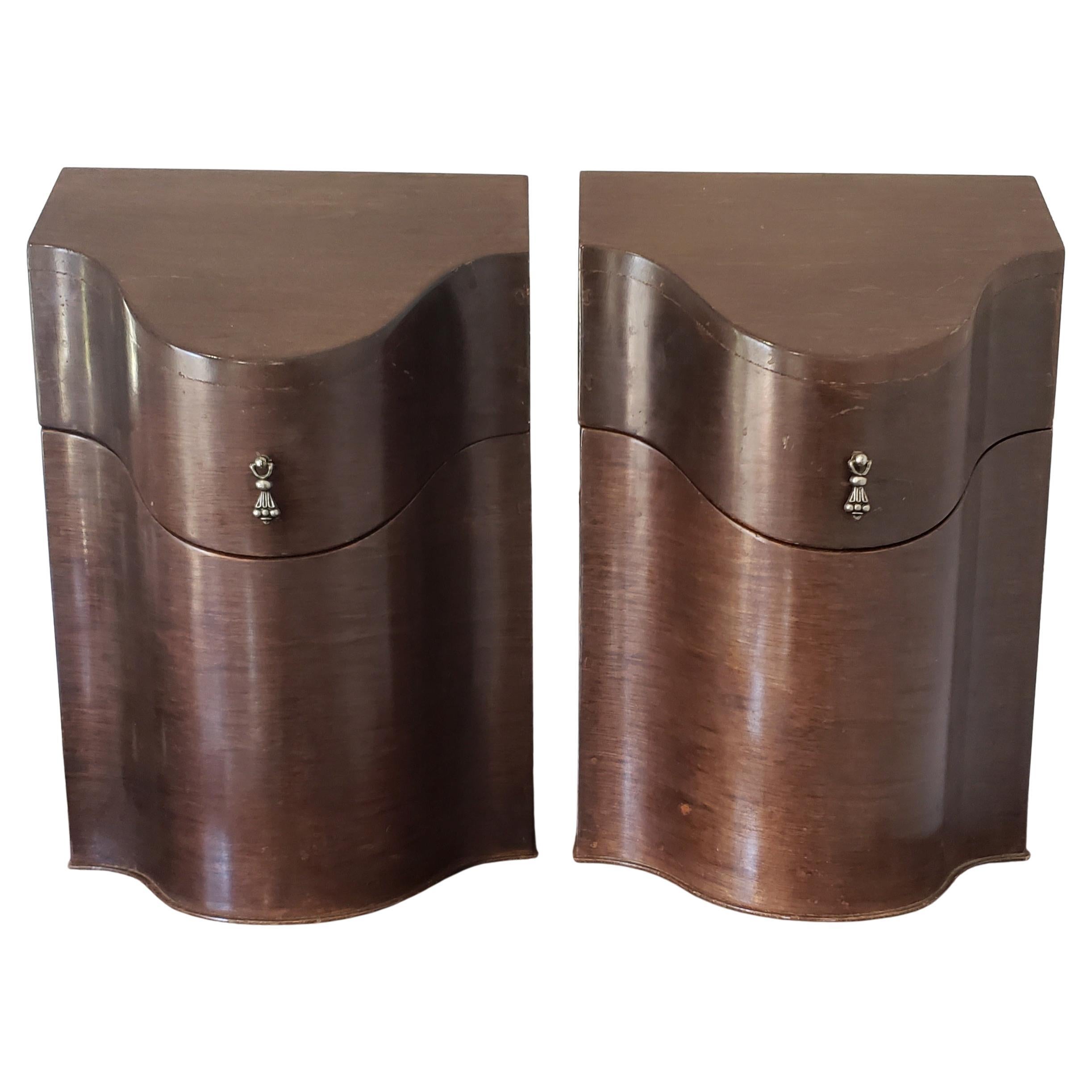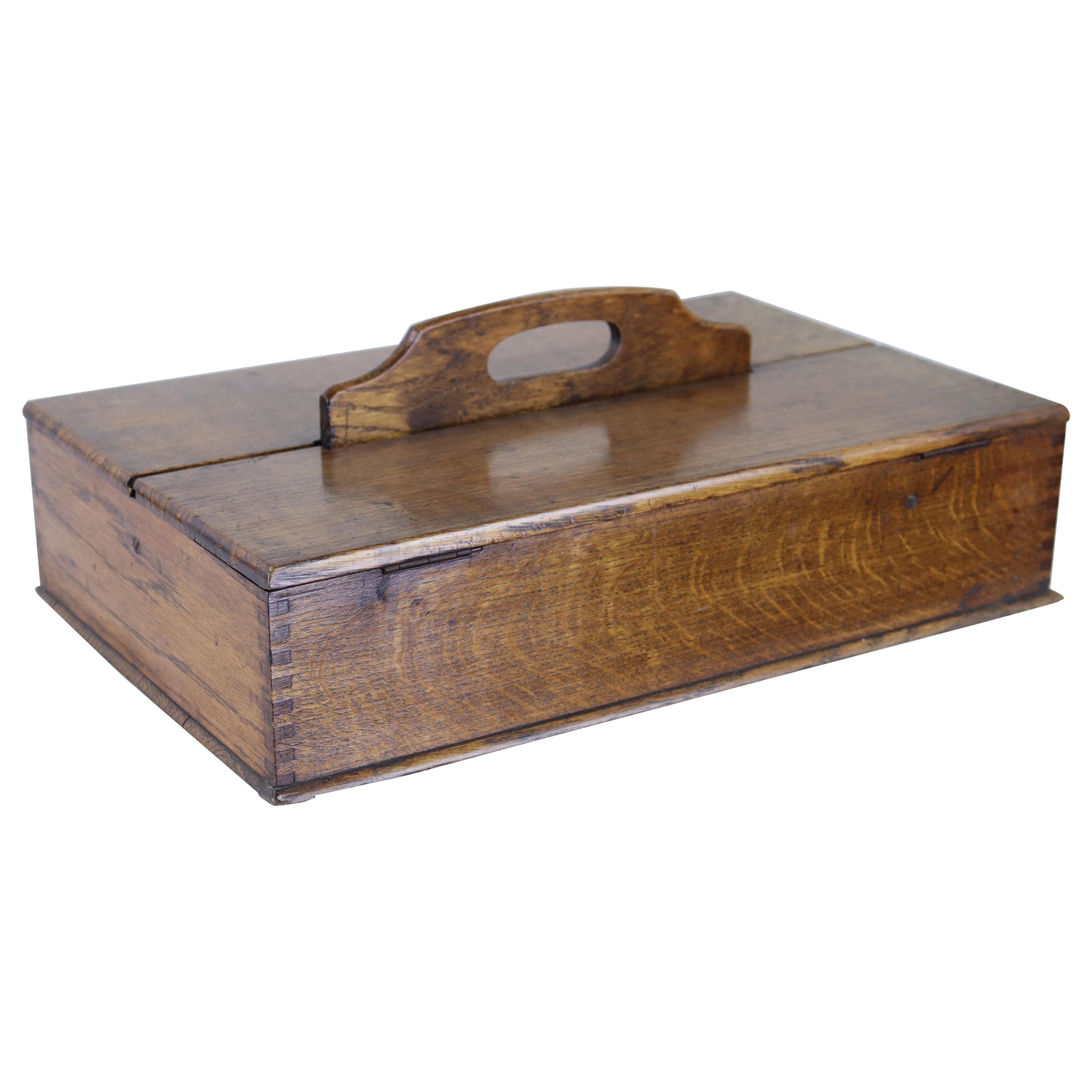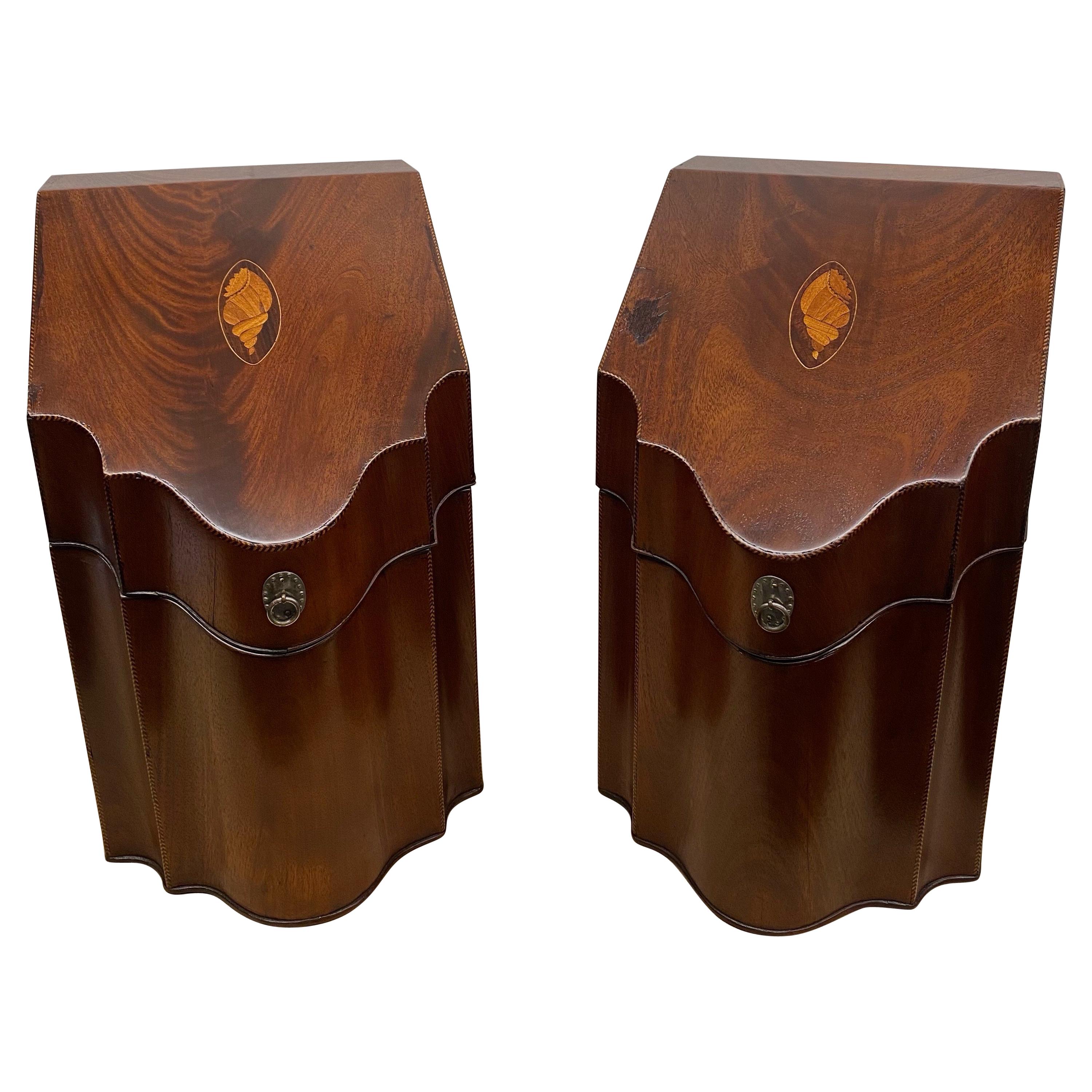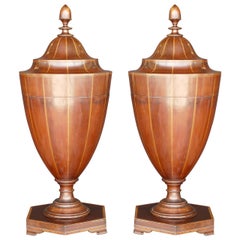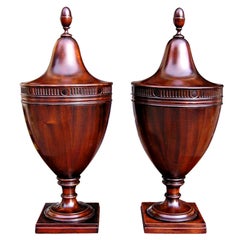
Very Fine Pair of Chippendale Period Cutlery Urns
View Similar Items
1 of 7
Very Fine Pair of Chippendale Period Cutlery Urns
About the Item
- Dimensions:Height: 25 in (63.5 cm)Diameter: 10.25 in (26.04 cm)
- Sold As:Set of 2
- Style:Chippendale (Of the Period)
- Materials and Techniques:
- Place of Origin:
- Period:1770-1779
- Date of Manufacture:circa 1770
- Condition:Wear consistent with age and use.
- Seller Location:New York, NY
- Reference Number:Seller: 150-1241stDibs: LU91013954853
You May Also Like
- Pair of George III Mahogany Cutlery-UrnsLocated in Kilmarnock, VAA pair of Sheraton period cutlery-urns with a turned finial to the top, with feather-banded boxwood inlaid vertical stripes to the lid and body, with a turned socle, on a hexagonal b...Category
Antique 1790s English George III Knife Boxes
MaterialsMahogany
$16,000 / set - Pair of Mahogany George III Style Cutlery Urns-Priced individually.Located in WEST PALM BEACH, FLThis is a lovely pair of English George III style mahogany cutlery urns with delicate satinwood stringing. The top with centered finial lifts to reveal apertures for the cutlery. The...Category
Early 20th Century English George III Knife Boxes
MaterialsWood, Mahogany
- Pair of American Mahogany Urn Cutlery Boxes with Fluted Medallion Gallery C 1820Located in Hollywood, SCPair of American mahogany flanking Urn telescopic cutlery boxes with acorn finials, fluted medallion gallery, original interior cutlery slots, and resting on turned ringed circular s...Category
Antique 1820s American American Empire Knife Boxes
MaterialsMahogany, Pine
$10,200 Sale Price / set32% Off - Pair of Fine Japanese Export Lacquer Cutlery Knife Boxes, 18th CenturyLocated in Amsterdam, NLA pair of fine Japanese export lacquered cutlery boxes Kyoto or Nagasaki, late 18th century H. 33.5 x W. 24 x D. 21 cm The bow-fronted boxes with sloping lids flat at the top are made of hinoki wood (Cypress), coated with Japanese paper and decorated in lacquer with scattered gold birds and flowers on a nashiji background. The Japanese mounts are made of copper and both boxes still have internal partitions to keep the cutlery upright. The form of these boxes is similar to a pictorial-style knife box in the collection of the Groninger Museum (inv. 1989- 347), dated between 1730 and 1780, but the style of the decoration is more like that on a knife box in the Peabody Essex Museum in Salem (inv. E62271), which was brought to Salem by James Devereux, Captain of the Franklin, in 1799. Provenance: Henriette Jeane Christine van Neukirchen, called Nyvenheim (1807- 1849) and Nicolaas Johan Steengracht van Oostcapelle (1806-1866), thence by descent to the last owners, Ludolphine Emilie baronesse Schimmelpenninck van der Oye (1944) married in 1969 to Roland Daniel van Haersma Buma (1944), the last residents of castle Duivenvoorden near Voorschoten and the great-great-granddaughter of Nicolaas Johan Steengracht van Oostcapelle. There is no evidence that Nicolaas Johan himself, or any of his or his wife’s ancestors had ever been in Japan. However, Nicolaas’ grandfather (Nicolaas Steengracht, 1754-1840) was a director of both the VOC and WIC (West Indies Company...Category
Antique Late 18th Century Japanese Lacquer
MaterialsSilver
- Pair Antique English Mahogany Knife & Fork Cutlery Urns / Boxes, Circa 1910-1920Located in New Orleans, LAPair antique English mahogany knife and fork cutlery urns / boxes, Circa 1910-1920. Exceptional size.Category
Early 20th Century Urns
MaterialsMahogany
- Pair Antique 19th Century English Mahogany Cutlery Urns / Knife Boxes Circa 1890Located in New Orleans, LAPair antique 19th century English mahogany cutlery urns / knife boxes, Circa 1890.Category
Antique 19th Century English Knife Boxes
MaterialsMahogany
